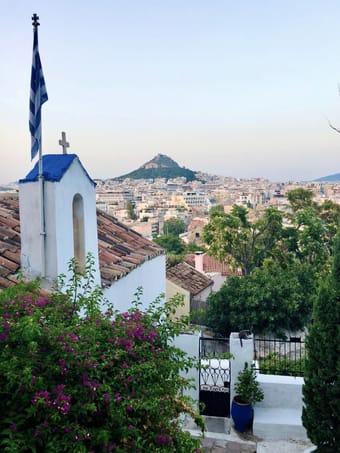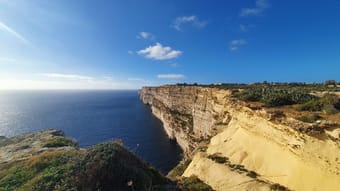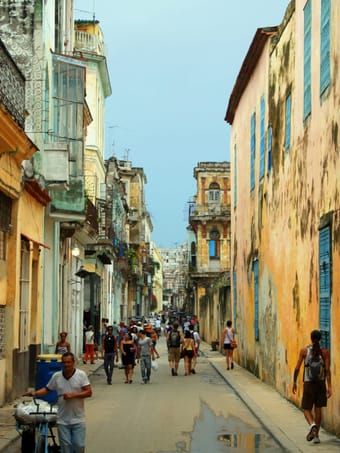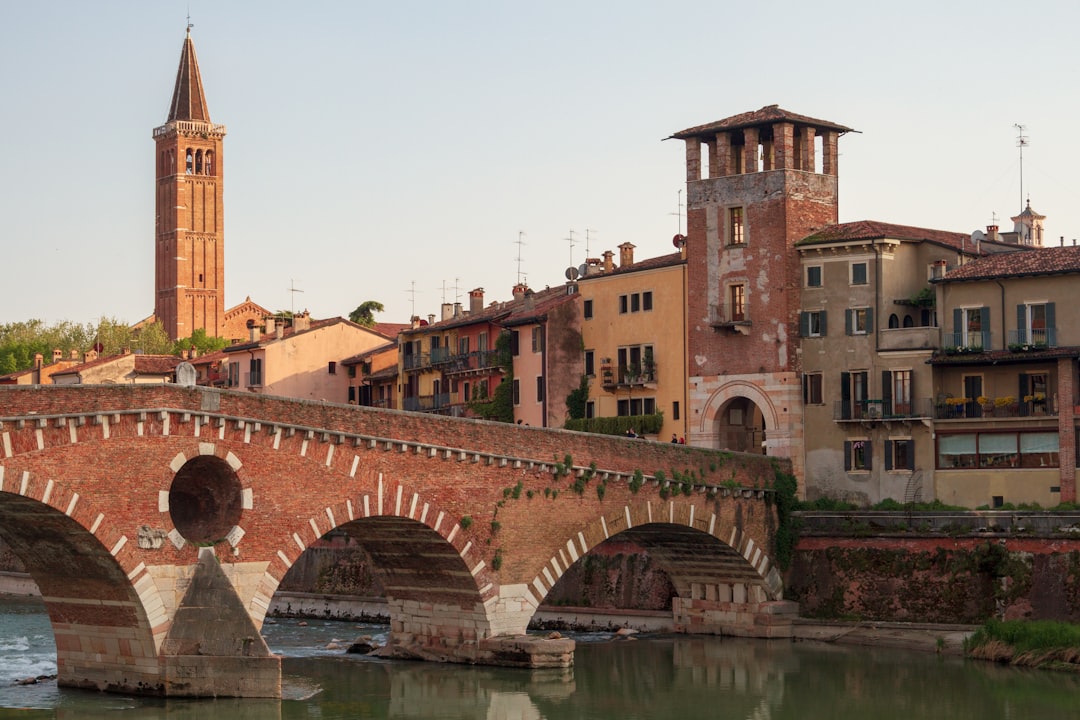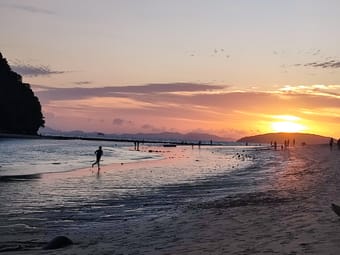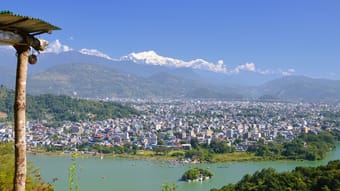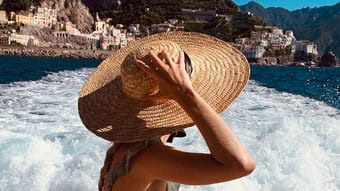Results for Exploration
Sweden's second largest city on the western seaside, boasts a ton of archipelago exploration and adventure. Hiking around the archipelago is a must-do!
50+ • Accessibility • Backpacker • Business • Car-free • Couples • Digital Nomads • Family • Gluten-free / Celiac • Groups • Halal • LGBTQ+ • Pets • Plus Size • Female Solo • Vegan • Vegetarian • Adventure • Architecture • Art • Boutique • Coffee • Design • Foodie • History • Outdoors • People & Culture • Photography • Romantic • Shopping
$5.00
0
Saint Paul is the capital of Minnesota and offers a wide variety of history, culture, and art exploration in the city. As a resident of Saint Paul, I can recommend some highlights to visit year round at anytime.
What to see and do in Saint Paul, MN?
1. Minnesota State Capitol
2. Science Museum of Minnesota
3. Como Park Zoo & Conservatory
4. Minnesota History Center
5. Minnesota Children's Museum
50+ • Backpacker • Business • Car-free • Couples • Family • Groups • LGBTQ+ • Plus Size • Female Solo • Vegan • Vegetarian • Digital Nomads • Architecture • Art • Foodie • History • People & Culture
Free
0
There's no worse feeling than finding yourself in a new city, yearning for a perfect cup of coffee, and not knowing where to turn. As a fellow enthusiast of a rich, aromatic brew, let me be your guide to uncovering the best coffee spots in Edinburgh.
I handpicked these coffee shops not only for their exceptional brews but also for their strategic locations. You'll find that each spot is conveniently nestled near Edinburgh's biggest tourist attractions, ensuring you can easily refuel amidst your exploration. What's more, these hidden gems are also the cherished go-to spots for the locals, providing you with an authentic taste of the city's vibrant coffee culture and a chance to immerse yourself in the local buzz. Get ready to indulge in a perfect cup of coffee while soaking in the essence of Edinburgh, all in one go.
Couples • Groups • Vegan • Vegetarian • Female Solo • Family • Backpacker • Digital Nomads • Pets • 50+ • Business • Plus Size • Car-free • Accessibility • LGBTQ+ • Budget • Coffee • Foodie • History • Relaxation • Slow Travel
Free
0
Welcome to the world of Philadelphia markets! Philly markets are a reflection of the city's rich history, cultural tapestry, and culinary heritage. 🍕
In this travel guide, you will go on an enchanting exploration of the city's most iconic markets, each with its own unique character and charm. 👣
Whether you're a food enthusiast, a history buff, or simply looking for a memorable shopping experience, these markets have something special to offer everyone. 🍜
Foodie • Architecture • People & Culture • Shopping
Free
0
The Greek hidden gem
Corfu, known as Kerkyra in Greek, is a stunning island located in the Ionian Sea off the northwest coast of Greece. Its rich history dates back to ancient times, with influences from various cultures including the Greeks, Romans, Byzantines, Venetians, French, and British. This diverse cultural heritage is reflected in the island's architecture, cuisine, and traditions, making Corfu a unique destination in the Mediterranean.
The island's capital, Corfu Town, is a UNESCO World Heritage site, renowned for its elegant Venetian architecture, narrow cobblestone streets, and historic landmarks. The Old Fortress and the New Fortress are prominent features, offering panoramic views of the town and the sea. Corfu Town also boasts numerous museums, such as the Archaeological Museum and the Museum of Asian Art, which showcase the island's rich history and cultural connections.
Corfu's natural beauty is another major draw for visitors. The island is known for its lush green landscapes, olive groves, and stunning beaches with crystal-clear waters. Some of the most popular beaches include Paleokastritsa, Glyfada, and Sidari, each offering a unique charm and a range of activities from sunbathing to water sports. Inland, the island is dotted with traditional villages, where visitors can experience local customs and hospitality.
In addition to its natural and architectural beauty, Corfu has a vibrant cultural scene. The island hosts various festivals and events throughout the year, celebrating everything from music and dance to religious traditions. The Corfu Easter celebrations are particularly famous, featuring processions, music, and the unique custom of "botides," where clay pots are thrown from balconies to mark the resurrection of Christ. This blend of tradition and festivity provides a lively atmosphere for both locals and tourists.
Corfu's cuisine is another highlight, influenced by its multicultural history. Traditional dishes often feature fresh seafood, locally grown vegetables, and olive oil. Some local specialties include "pastitsada" (a spicy meat stew with pasta), "sofrito" (veal in white wine and garlic sauce), and "bourdeto" (a spicy fish stew). The island's vineyards produce notable wines, and local olive oil is highly prized. Dining in Corfu offers a delightful exploration of flavours and culinary traditions, making it a paradise for food enthusiasts.
Accommodation is an important decision to make prior to planning your route but our firm suggestion is to stay somewhere in the northern part of the island. We chose to stay in Pyramid City Appartments - a budget friendly accommodation is the North-East side with great views to the Albanian coast but very poor connections.
The roads can get very narrow in this side of the isle therefore if you're not comfortable driving in other countries and with rental cars you're better off staying near Paleokastritsa with very good connections but less relax.
Couples • Family • Groups • Female Solo • Backpacker • LGBTQ+ • Digital Nomads • Adventure • Art • Budget • Coffee • Foodie • History • Outdoors • Photography • Relaxation • Road Trip • Romantic • Wellness • Wine
$12.00
0
Welcome to Spain! Over the course of 15 days, you will embark on a captivating journey through the heart of this enchanting country, exploring the dynamic cities of Madrid, Barcelona, Granada, and Sevilla.
From the streets of Madrid, where historic landmarks and world-class museums await, to the cosmopolitan vibe of Barcelona, with its iconic architecture and dynamic food scene, each destination promises unforgettable experiences and cultural delights.
Journey south to Granada, where the majestic Alhambra Palace and Moorish influences transport you to another time, before ending your adventure in Sevilla, where flamenco rhythms and winding medieval streets beckon you to explore.
Get ready for an unforgettable exploration of Spain's rich history, diverse landscapes, and warm hospitality on this unforgettable journey!
Couples • Groups • Architecture • Art • Design • History • People & Culture
$30.00
0
This itinerary offers a 15-day trip with balanced mix of relaxation, exploration, and cultural experiences across Uluwatu, Canggu, Ubud, Gili Islands, and Nusa Penida, including sunset-tips and dining & hotels recommendations. All the Bali-Must-Haves!
Backpacker • Car-free • Couples • Digital Nomads • Family • Groups • LGBTQ+ • Female Solo • Vegan • Vegetarian • Adventure • Budget • Coffee • Foodie • Outdoors • History • Overlanding • People & Culture • Photography • Road Trip • Relaxation • Slow Travel • Wellness
Free
3
Lisbon is a total gem of a city where traditional heritage meets modern vibrancy, and this is nowhere more evident than in its food and culture scene. The city is a bustling metropolis that offers a unique blend of the old-world charm with contemporary flair, making it a must-visit destination for culture enthusiasts and foodies alike.
Lisbon's culinary scene is a reflection of Portugal's rich maritime history, with an emphasis on fresh seafood. Cod (bacalhau) dishes are ubiquitous, served in various forms such as "Bacalhau à Brás" (shredded cod with onions, potatoes, and eggs). Sardines, especially grilled sardines (sardinhas assadas), are another staple during the summer months. But Lisbon's food scene isn't limited to seafood; "Alheira," a type of sausage made from meats other than pork, and "Bifana," a traditional pork sandwich, are also popular among locals and tourists.
Pastries and sweets hold a special place in Lisbon's culinary landscape, with "Pastéis de Nata" (custard tarts) leading the charge. These creamy, flaky pastries originated in the city's Belém district and are a must-try for anyone visiting Lisbon. The city's coffee culture is equally noteworthy, with cafes and pastelarias dotting every corner, inviting visitors to indulge in a leisurely "bica" (espresso) paired with a pastry.
Lisbon's culture is as diverse as its culinary offerings. The city is renowned for Fado music, a soul-stirring genre characterized by its melancholic tunes and lyrics that reflect the Portuguese concept of "saudade," or longing. Visitors can experience live Fado performances in various "casas de Fado" throughout neighborhoods like Alfama and Mouraria, offering an intimate glimpse into Portugal's soul.
Art and history are woven into the fabric of the city, with numerous museums and galleries showcasing everything from contemporary art to artifacts that trace Portugal's maritime exploits. The LX Factory, a former industrial complex turned cultural hub, epitomizes Lisbon's blend of historical roots with modern creativity, hosting art studios, bookshops, eclectic boutiques, and thematic restaurants.
The city's architecture is another highlight, with the Pombaline downtown area (Baixa) offering a grid-like layout unique to Europe, majestic plazas like Praça do Comércio, and iconic monuments such as the Belém Tower and Jerónimos Monastery. The juxtaposition of traditional azulejos (ceramic tiles) adorning buildings with street art and murals in districts like Bairro Alto and Graça adds to the city's vibrant aesthetic.
Lisbon is a city that delights the senses and stirs the soul, offering a rich tapestry of food and culture that seamlessly blends tradition with innovation. Whether it's in the simple pleasure of a Pastel de Nata, the haunting melodies of Fado, or the intricate beauty of azulejos, Lisbon invites exploration and promises unforgettable experiences.
50+ • Business • Car-free • Female Solo • Digital Nomads • Family • Architecture • Art • Boutique • Design • Foodie • History • Luxury • People & Culture • Photography • Romantic • Relaxation • Wine • Shopping • Coffee
$5.00
0
Downtown Athens is a sensory overload of narrow streets, chock-a-block apartments, bric-a-brac shops, and ancient ruins around every twisted corner. A jumble of contradictions—old and new, glamour and grit—but the city buzzes with creative energy, ancient sites, and offbeat gems worth exploring. We're here to help you navigate this wonderful city!
Thrilled to offer our design lover’s city guide, featuring a handpicked collection of stays, eats, and experiences in Athens. Our CityKITs gently nudge travelers off the beaten path, encouraging aesthetic and positive-impact exploration that benefits travelers, local communities, and the environment.
The CityKIT includes:
- 4 recommended conscious boutique hotels in Athens
- 6 favorite spots for Coffee & Nibbles
- 6 favorite lunch spots
- 9 favorite restaurants to grab dinner
- 9 cool bars and roof terraces
- 7 suggested places to walks and explore the city
- 5 museums and must-see sites
- 5 offbeat experiences in Tbilisi
- 6 recommended places for art and design lovers
- 5 recommendations to shop
50+ • Couples • Family • Female Solo • Architecture • Art • Boutique • Design • Foodie • History • Luxury • People & Culture • Photography • Shopping • Slow Travel • Sustainable/Eco
$8.00
0
Where else but in the middle of the Mediterranean Sea might you find such a little, gorgeous island? Malta is a lovely place to go for a summer beach holiday, however… the islands of Malta have a rich history that has yet to be explored. Will a week be sufficient? Due to its compact size, Malta allows visitors to maximize their sightseeing potential.
This Itinerary is based on my explorations and carefully chosen places based on the best reviews, and my experience for an amazing road trip in Malta in the offseason.
There are three islands to choose from, but You will only have time to explore two of them—Malta and Gozo—in just seven days. If You go in the off-season, however, You may also have time to visit Comino. Don’t waste Your money and time staying in different places if you’re traveling just for a week, do it only if it’s Your comfy home on wheels and you’re staying there.
To give you an idea of how effective this can be, consider the following: two nights at one hotel on the island of Gozo, remaining nights in one hotel on the Maltese mainland, and one day of exploration in Comino without lodging.
If you’re flying and hiring a car at the airport, Gozo as a first destination will be more convenient, but for the following days, explore Malta’s mainland. The streets are mostly tiny in Malta so be prepared for that.
Budget • Adventure • History • Nature • RV • Photography • Road Trip • Mountain • Beach • Relaxation
$9.60
5
Cuba dazzles, enchants, and lures you in with its melancholic beauty, vibrant culture, and gracious people. It's a place of eternal contrasts, where decay and elegance, real and surreal, live side by side — in its art, streets, politics, and way of life. Nowhere is its character more on display than in Havana. Narrow streets lined with crumbling mansions and pastel-colored vintage cars, parades of trumpeting musicians and gyrating stilt dancers, and the Habaneros for whom the streets are part of life. Around every corner, a new layer is peeled back to reveal yet another unexpected delight in this city of endless intrigue.
Our CityKITS gently nudge travelers off the trodden path, encouraging positive-impact exploration that’s a win-win for travelers, local communities, and the environment.
The CityKIT includes:
- 5 recommended conscious boutique hotels and residences in Havana
- 5 favorite spots for Coffee & Nibbles
- 4 favorite lunch spots.
- 6 favorite restaurants to grab dinner
- 6 cool bars and rooftop terraces
- 5 suggestions for walks and exploration in the city
- 8 locally immersive and offbeat experiences in Tbilisi
- 7 places for art and design lovers
- 5 recommended places to shop
- 3 recommended tours and tour guides
50+ • Female Solo • Couples • Groups • Architecture • Art • Boutique • Design • History • Luxury • Photography • Slow Travel • Sustainable/Eco
$8.00
0
I love Madrid and I want to help you to embark on a journey through the vibrant capital of Spain, a city brimming with distinctive features and cultural richness that make it special.
Madrid is renowned for its lively and dynamic atmosphere. The locals, known as "Madrileños," embrace a vibrant nightlife, with late dinners, tapas bars, and spirited entertainment lasting into the early hours.
This three-day itinerary offers a seamless way to make the most of your time in Madrid, ensuring a balanced exploration without the sense of being overwhelmed.
Backpacker • Car-free • Female Solo • Art • Budget • History • People & Culture
$5.99
1
Fall in love with Verona, Italy in the city known for love. This complete guide includes 21 things to do (and is constantly updating), including 1 gelato shop, 1 lunch spot/spot for drinks/cicchetti. From the main tourist sites, that you'll need to visit if it's your first time, to more off the beaten path explorations, if you've been to Verona before, this guide has it all!
Female Solo • Groups • LGBTQ+ • Couples • 50+ • Digital Nomads • Family • Backpacker • Car-free • People & Culture • Foodie • History • Romantic • Slow Travel • Sustainable/Eco • Shopping • Wine • Art • Budget • Relaxation • Architecture
$9.50
3
An Exploration Guide to the Beautiful Province of Krabi and Its Dreamy Islands🌊
I've marked stays, restaurants and the activities I undertook during approximately 6 days of my stay on the Ao Nang coast on one of the stops of my backpacking journey across Thailand.
You will find detailed information about the tours, including prices itinerary stops and where to book them.
Ready for Paradise?
Adventure • Relaxation • Beach • People & Culture • Nature
Free
3
Welcome to Pokhara, a place I have visited many times, mostly as a starting point for my treks into the Annapurna mountains. In this guide, I want to share with you everything I love about Pokhara.
I'll give you tips on:
👀 The best places to see
🍽️ Where to eat
🛏️ Where to stay
🚴♂️ Fun activities to do
Additionally, this guide features a specially curated day tour that visits the highlights of Pokhara, ensuring you experience the best sights and sounds this city has to offer.
Whether you're here for the amazing treks or just to explore the city and its surroundings, this guide will help you find the best of what Pokhara has to offer.
This guide also includes an interactive map that will simplify your exploration of the city, making it easier for you to navigate and enjoy your visit.
50+ • Backpacker • Couples • Digital Nomads • Family • Groups • Plus Size • Female Solo • Vegetarian • Adventure • Boutique • Budget • Coffee • Foodie • History • Luxury • Outdoors • People & Culture • Photography • Relaxation • Romantic • Slow Travel
$12.00
0
Embark on an unforgettable adventure in Karijini National Park, Western Australia. This itinerary offers a mix of relaxation, exploration, and breathtaking natural beauty. From the best campspots and enjoying a leisurely walk to venturing into stunning gorges and conquering Mount Bruce, each day brings new experiences. Take a refreshing swim at Handrail Pool, savor a sustainable dining experience at Karijini Eco Retreat, and find a little entra surprise at the end of the guide. Immerse yourself in the wonders of Karijini, where nature's beauty awaits at every turn.
$9.99
0
The Amalfi Coast is an unforgettable destination. Sure, there are some unmissable classics, but venturing off the tourist trail, you can immerse yourself in the lesser-known wonders cherished by the locals. From secluded coves to historical treasures, this itinerary unveils the authentic essence of the Amalfi Coast, offering an enriching journey beyond the ordinary. Get ready to be spellbound by the untouched beauty and enchanting surprises that await you on this off-the-beaten-path exploration.
Families • Groups • LGBTQ+ • Solo Female • History • Nature • Romantic • Beach • Sustainable/Eco • Photography • People & Culture • Art • Architecture • Adventure
$25.00
0
NYisMyBackyard NYC Tours, Itineraries
Manhattan Neighborhoods
of New York City Itineraries Master Map
Mapped out here are E-tineraries for neighborhoods of NYC borough of Manhattan you can utilize for your travel plans/exploration of New York.
Each location will have a link where you can access (after purchase) a specialized E-tinerary for that neighborhood; with more information on what's inside.
Also included will be access to free rummage style folders with information regularly added on events and things to do in the neighborhood of your choice.
Have a look around and thanks ahead of time for your interest.
All the best!
Melin from NY is My Backyard
To see the collection of itineraries offered at a glance
Visit:
https://ko-fi.com/nyismybackyard/shop
Interested in special access to subscriber-only newsletter NY resources & updates of this and other maps
Sign up here:
https://www.nyismybackyard.com/join
For more information on NYisMyBackyard
https://bio.link/nyismybackyard
Budget
Free
1
Ask ThatchGPT









